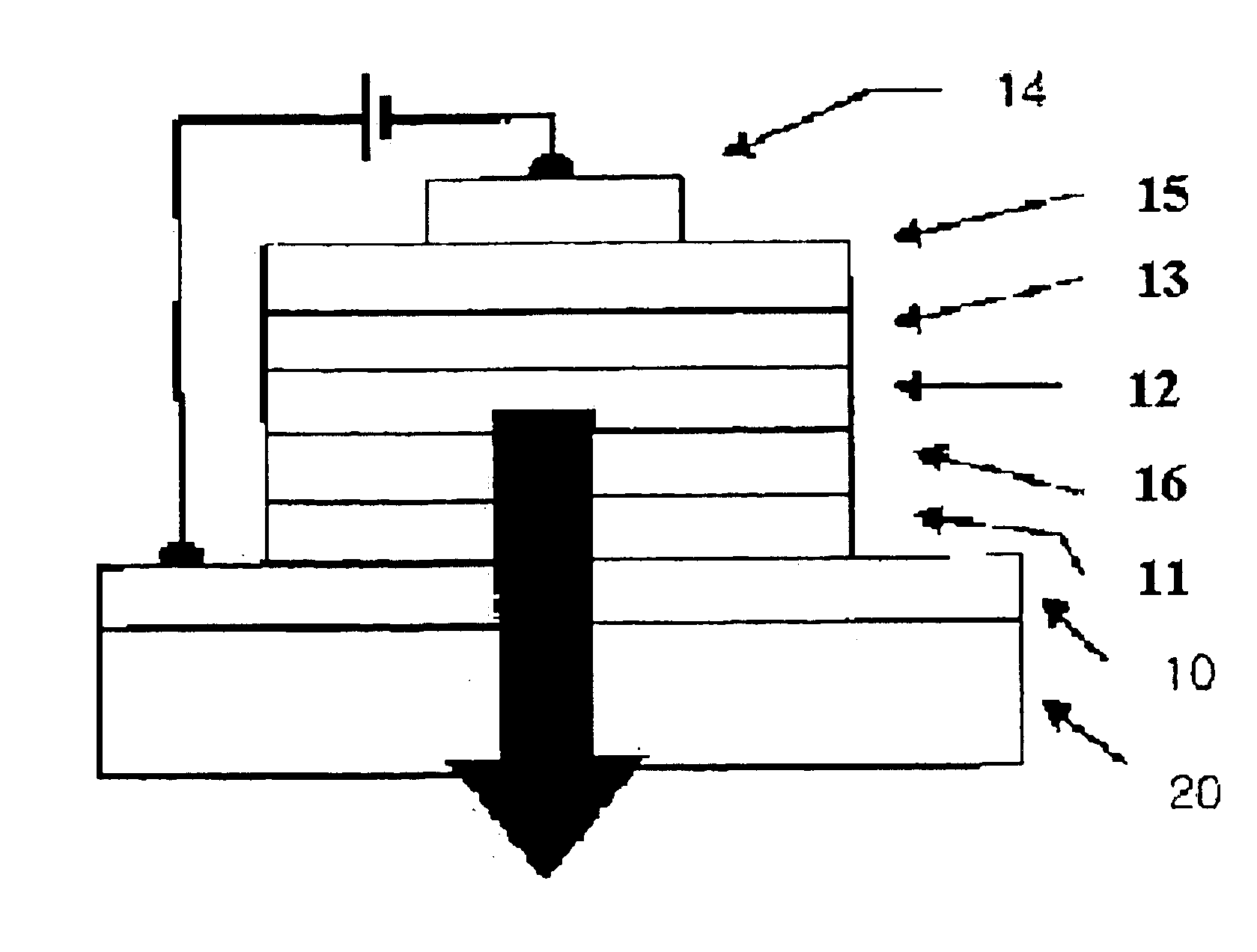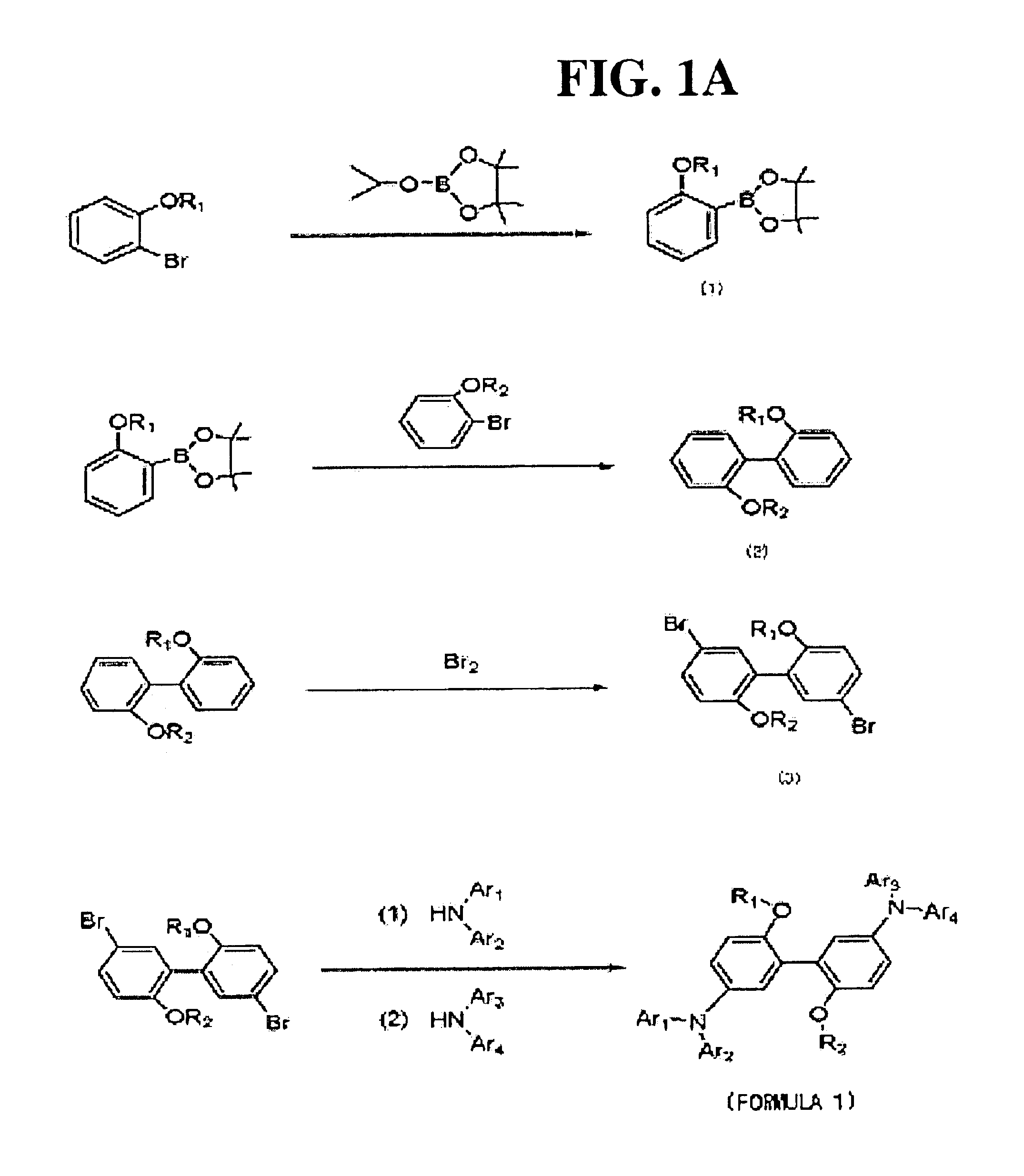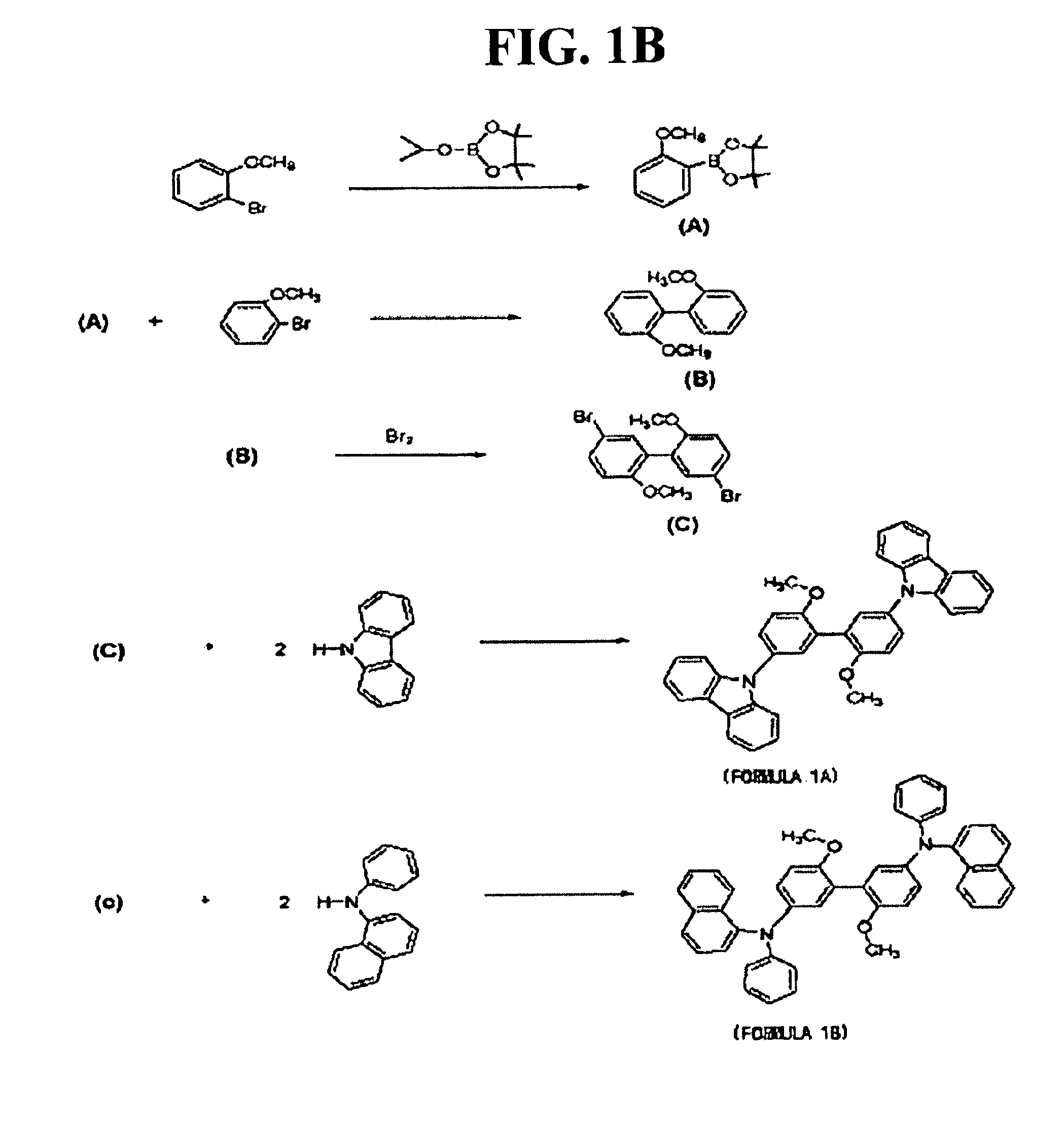Biphenyl derivatives and organic electroluminescent device employing the same
a technology of biphenyl derivatives and organic electroluminescent devices, which is applied in the direction of discharge tube luminescnet screens, natural mineral layered products, etc., can solve the problems of shortened lifetime characteristics, difficult suitability of low molecular weight organic el devices, and low emission efficiency of polymer-based el devices, etc., to achieve improved thermal stability and crystal stability, easy purification, and easy formation of thin layers
- Summary
- Abstract
- Description
- Claims
- Application Information
AI Technical Summary
Benefits of technology
Problems solved by technology
Method used
Image
Examples
preparation example 1
Compound Represented by Formula 1a
[0088]1. Preparation of Compound (A)
[0089]2-bromoanisole (40 g (214 mmol)) was dissolved in 246 mL of anhydrous THF and cooled to −75° C., and 103 mL (1.2 eq) of n-butyl lithium was slowly added thereto, followed by agitating for about 1 hour. To this was added 51.8 g (1.3 eq) of 2-isopropoxy-4,4,5,5-tetramethyl-1,3,2-dioxaborolane and reacted for 1 hour.
[0090]After the reaction was completed, the reaction mixture was extracted three times using water and ethyl acetate, dried using MgSO4, and concentrated. The concentrated product was subjected to distillation under reduced pressure to remove unreacted 2-isopropoxy-4,4,5,5-tetramethyl-1,3,2-dioxaborolane to produce the compound (A). The structure of the compound (A) was identified through 1H-NMR.
[0091]2. Preparation of Compound (B)
[0092]Compound (A) (10.3 g (44 mmol)) and 7.5 g (1.1 eq) of 2-bromoanisole were dissolved in 29 mL of anhydrous toluene, 29 mL of THF, and 89 mL of 2M Na2CO3 aqueous solut...
preparation example 2
Compound Represented by Formula 1b
[0100]Compound (C) (3 g (8.1 mmol)) and 3.57 g (2.02 eq) of N-phenyl-1-naphthylamine were dissolved in 70 mL of anhydrous toluene, and 2.35 g (3 eq) of sodium tert-butoxide (NaOtBu), 0.08 g (0.05 eq) of tri(tert-butyl)phosphine ((t-Bu)3P) and 0.3 g (0.04 eq) of Pd2(dba)3 as a catalyst were added, and reacted at approximately 120° C. for approximately 48 hours.
[0101]After the reaction was completed, the reaction product was extracted using water and ethyl acetate, and dried, followed by removing side reaction products through open column chromatography using n-hexane as a development solution, thereby producing the compound represented by formula 1b. The structure of the compound represented by formula 1b was identified through 1H-NMR, as shown in FIG. 3. 1H-NMR (CDCl3, δ) 3.59 (s, 6H, 2-OCH3), 6.68-8.03 (m, 3OH, Aromatic Protons).
[0102]FIG. 4A schematically shows preparation processes of compounds represented by formulas 1c and 1d, which will now be...
preparation example 3
Compound Represented by Formula 1c
[0103]1. Preparation of Compound (D)
[0104]2-bromophenol (50 g (290 mmol)) was dissolved in 500 mL of acetone and 48.4 g (350 mmol) of K2CO3 was added thereto. To the reaction product was added 73.3 g (380 mmol) of 1-bromooctane and refluxed for 24 hours.
[0105]After the reaction was completed, the reaction mixture was extracted three times using water and CHCl3, followed by removing K2CO3. Then, organic layers were dried using MgSO4, concentrated, and subjected to column chromatography using n-hexane as a development solution. Unreacted 1-bromooctane was removed from the residue by distillation under reduced pressure, to produce the compound (D). The structure of the compound (D) was identified through 1H-NMR.
[0106]2. Preparation of Compound (E)
[0107]Compound (D) (38 g (130 mmol)) was dissolved in 150 mL of anhydrous THF and cooled to −75° C. and 100 mL (1.2 eq) of n-butyl lithium was slowly added thereto, followed by agitating for about 1 hour. To t...
PUM
| Property | Measurement | Unit |
|---|---|---|
| internal quantum efficiency | aaaaa | aaaaa |
| temperature | aaaaa | aaaaa |
| temperature | aaaaa | aaaaa |
Abstract
Description
Claims
Application Information
 Login to View More
Login to View More - R&D
- Intellectual Property
- Life Sciences
- Materials
- Tech Scout
- Unparalleled Data Quality
- Higher Quality Content
- 60% Fewer Hallucinations
Browse by: Latest US Patents, China's latest patents, Technical Efficacy Thesaurus, Application Domain, Technology Topic, Popular Technical Reports.
© 2025 PatSnap. All rights reserved.Legal|Privacy policy|Modern Slavery Act Transparency Statement|Sitemap|About US| Contact US: help@patsnap.com



